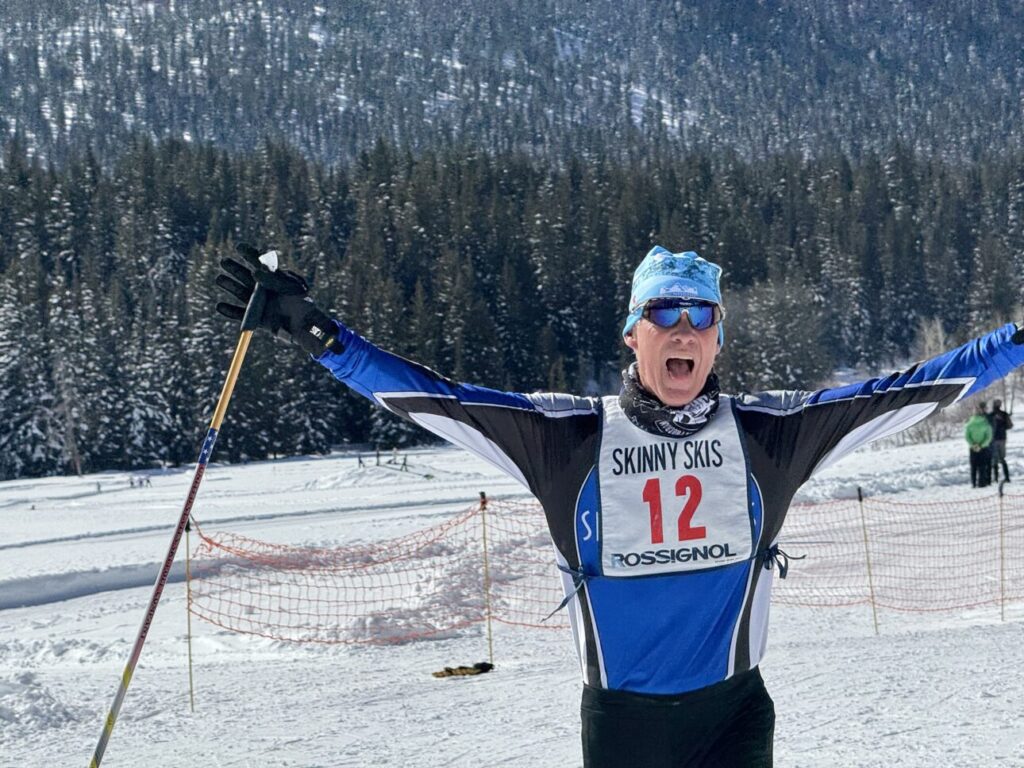With a bachelor of science degree in biology in hand, Cathy Shill started Hole Hiking Experience in Jackson in 1989. She was driven by her passion for the outdoors and a desire to share information about the Greater Yellowstone Ecosystem in hopes of ultimately increasing awareness and connection with the great outdoors.
“When I started the company in 1989, people didn’t think a business like this could exist or be viable,” Cathy said. “But then people started moving away from the art of horsepacking and riding horses, becoming a little bit more interested in hiking, eco-tourism, being on the trail, and different modes of travel. I just think our interest changed, so the business ended up being quite successful due to my vision and being in Jackson.”
Knowing she could get people outside and onto trails safely, Cathy saw it as a perfect opportunity to share her knowledge too.
Being Present with the winter activity
“To me, guiding gives us the opportunity for people to be present with the activity, for people to be inspired, awed, invigorated and motivated–all of those things nature gives us,” Cathy said. “And the Greater Yellowstone Ecosystem is unique because the connection within our web of life is complete here.”
Though it started with just hiking, in the mid-1990s, Hole Hiking expanded into more of a winter focus, operating year-round. It was a decision that came naturally from the demand in Jackson and just the simple focus on making a living in Jackson throughout the whole year. At the time, snowshoeing was a new sport gaining popularity for winter hiking, and it happened to be the perfect way to extend the Hole Hiking season without having to further complicate permits or permissions for the trips.

“Winter is wonderful because it’s the season of dormancy. It’s when things are quiet in Jackson–that stillness of winter that’s so special,” Cathy said. “And interpreting the winter landscape creates a great story with the snow world leaving tracks to help us figure out what the animals are doing.”
Cathy and the other naturalists at Hole Hiking also utilize interpretive themes to drive cohesion within tours, allow them to hone in on their passions, and align humans within the themes of the natural world.
“In the season of early winter, we are all feeling this change in life that’s spurring the bears, spurring migration, and spurring us to gather our wood. The more you can align people with the natural world, the more awe-inspiring moments they can have,” Cathy said. “You learn to slow down and be more contemplative and intuitive.”
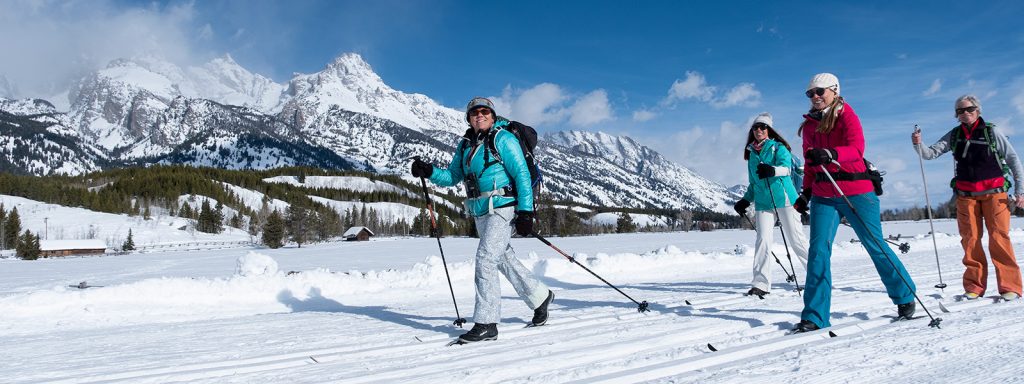
Winter Tour themes of Wildlife adapting to Winter
Cathy often focuses on botany, but adaptations become a huge theme in the winter. In the exploration of this theme, she likes to go beyond the question of how different species adapt to winter–beyond moose and elk migration and bear hibernation–to reinforce our connection to the natural world and ask how, in our own lives as humans, we adapt to the winter.
“We can also do more of an intangible theme like the flows through a landscape,” Cathy said. “We can look at how water is flowing through the landscape and ask how do we flow through the landscape? That’s a good thing for thinking about impact: can we flow through the landscape without negative impacts? Can we just leave only our footprints?”
In order to balance the impact of recreation with a desire to protect the environment, the Hole Hiking naturalists focus on leading by example and utilizing teachable moments. These efforts include being members of Leave No Trace and Tread Lightly, packing out garbage and paper products, and practicing proper backcountry bathroom protocol. If they see any negatively impacted areas, it can open discussion about heavily impacted lands, whether trampled or driven over, as well as some of the nuances of land impact like the importance of fire ecology.
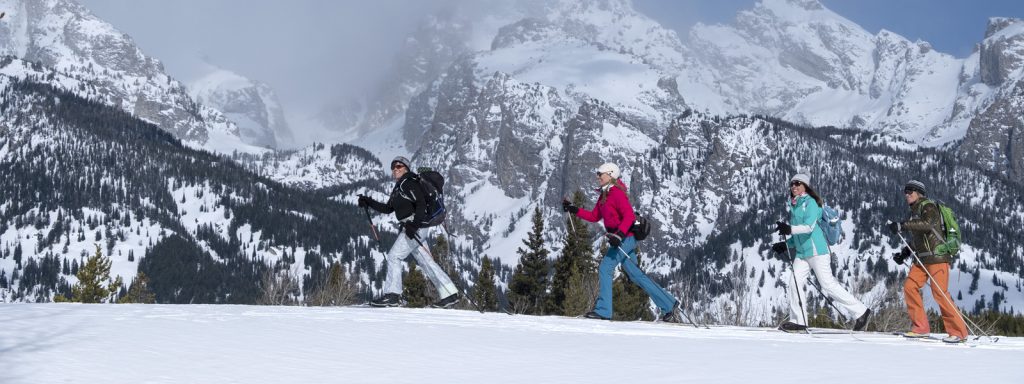
“It’s more important to me that we inspire, increase awareness and have a positive effect on the environment and community,” Cathy said.
Mindfulness practice on tours
Hole Hiking has started doing more combination tours, and Cathy hopes that going forward, they can increase focus on mindfulness and mindfulness practices on tours. Cathy has been practicing mindfulness for over 15 years with the Teton Sangha.
“Mindfulness is really just an observation,” Cathy said. “It would be the study of our minds, our thoughts, where we are internally or externally, being present in the moment, and ultimately about letting go.”
With mindfulness as a philosophy, an awareness that can be applied moment to moment, Cathy thinks there’s a deeper benefit to be reaped in nature.
“Wildlife is always present–they’re not planning their grocery list, they’re not planning their next meeting, they’re staying present, and their basic needs are getting met. You can even look at a stream and see how the current is continuously flowing, so wherever that leaf was that floats down that stream, it’s never going to go back to that spot. It’s always moving forward, so you can begin to see life that way and realize what is going on in this moment is going to change, and you learn to soften a little bit and open yourself up to some more peace and ease.”
Cathy has always been enthralled by the way that mother nature has figured things out, that the ways different organisms or species adapt, behave, and live are all intricately woven into the processes of life.
“I think the way the animals move through the snow world is pretty impressive,” Cathy said. “There’s the snowshoe hare that just weighs a couple of pounds with really big hind legs, so they can snowshoe amazingly. But then their predator, the lynx, is almost just as good, and it’s that direct relationship between the lynx and the snowshoe hare that mother nature created that lets them live together for eternity in this life cycle as they’re supposed to be.”
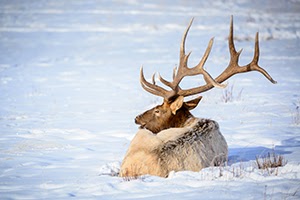
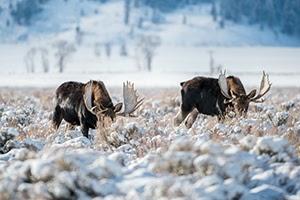
Seeing how mother nature has created these intricate and perfect systems has led Cathy to really think critically about human impact.
“If we go in and start snowshoeing or snowmobiling into nature, we pack down the trail, so all of a sudden, we’re letting other predators come in like the coyote and changing the environment,” Cathy said. “We have to look at our impacts and what we’re doing to change this web of life.”
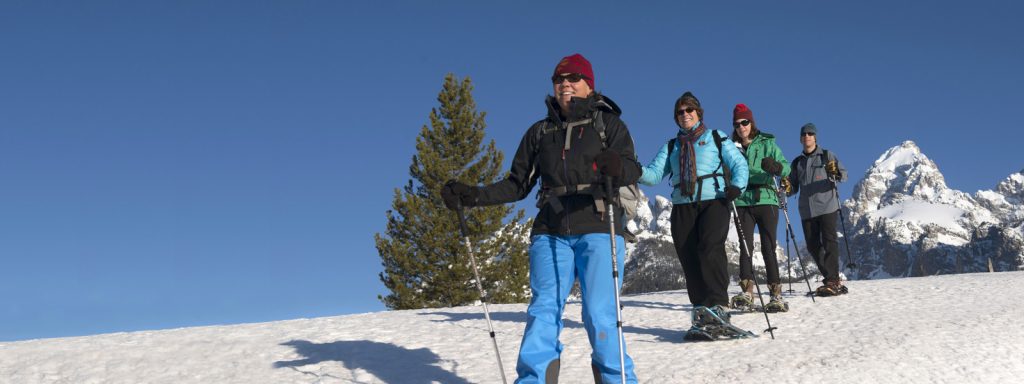
With mindfulness and stewardship as top priorities, Cathy and her colleagues at Hole Hiking move through the winter world with a keen sense of awareness and care, hoping to inspire others to do the same.
“The cool thing about guiding is that the natural world comes alive. Anybody can walk in the woods, but understanding the diversity of life is what makes it special,” Cathy said. “I love the ability to meet all sorts of people and share this ecosystem, watching them get inspired and wowed.”
If you are interested in doing a winter tour with Cathy or any other Hole Hiking naturalists, you can head to their website.


